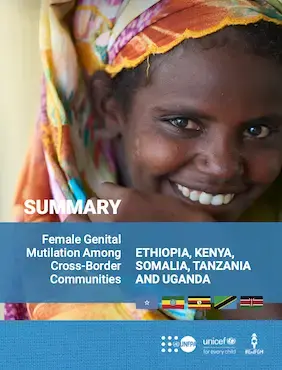FGM, or female circumcision, is practised in around 30 countries in Africa, the Middle East and Asia. Globally, it is estimated that over 200 million girls and women alive today have undergone FGM. Twenty-eight of the 30 countries where FGM is prevalent are in Africa. In the five countries studied in East Africa and the Horn of Africa, the prevalence of FGM among girls and women aged 15–49 years old ranges from 98 per cent in Somalia through 65 per cent in Ethiopia, 21 per cent in Kenya and 10 per cent in Tanzania to 0.3 per cent in Uganda. However, within countries, there are areas where the prevalence is higher than the national average, particularly in the border areas of Ethiopia, Kenya, Tanzania and Uganda.
A study set out to investigate the factors affecting the prevalence of the practice among cross-border communities in East Africa and the Horn of Africa and the extent to which people cross borders to practise or undergo FGM and the effects of the practice on the women and girls in those communities. Changes were found in social norms in the cross-border communities investigated, indicating that the practice of female genital mutilation (FGM) can be eradicated. Effective interventions to end FGM need to be tailored to communities’ belief systems if they are to be “owned” by and mobilize the communities to change their culture. This report summarises the findings.


